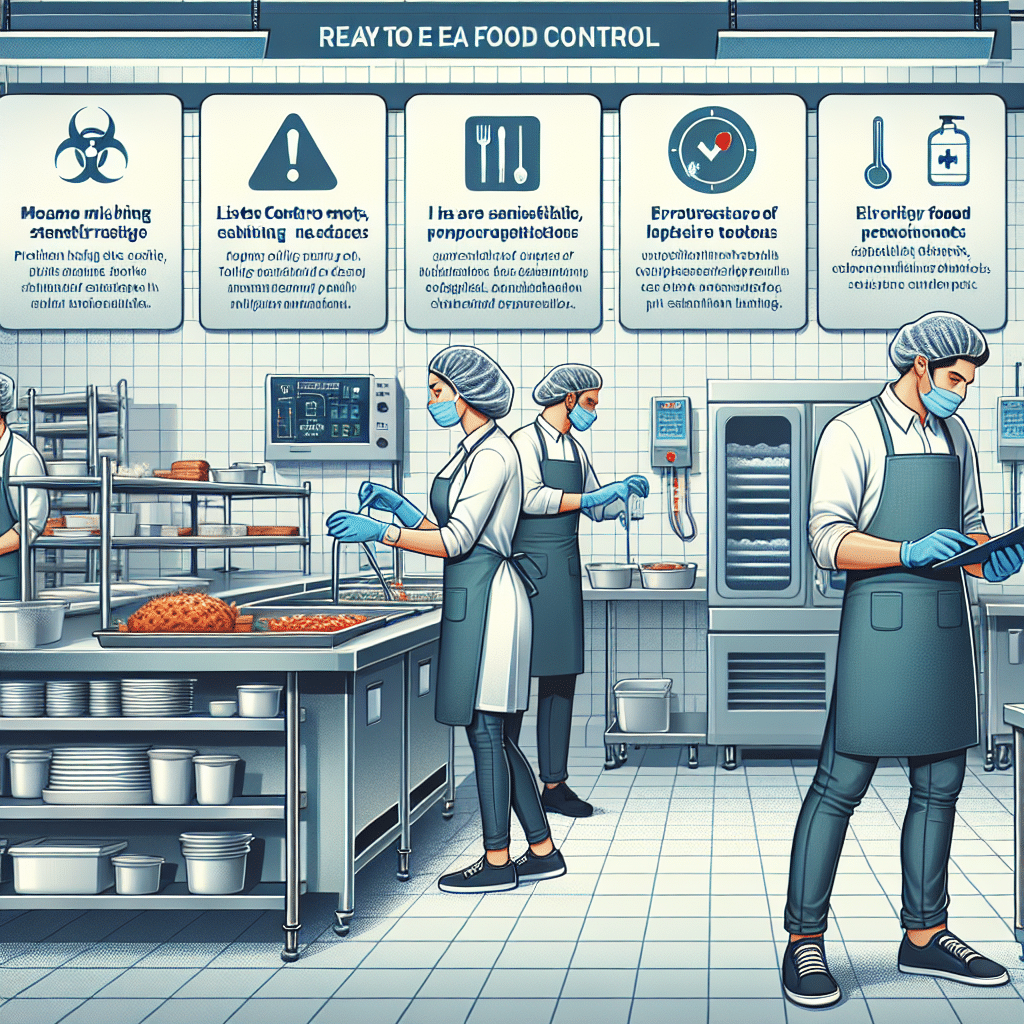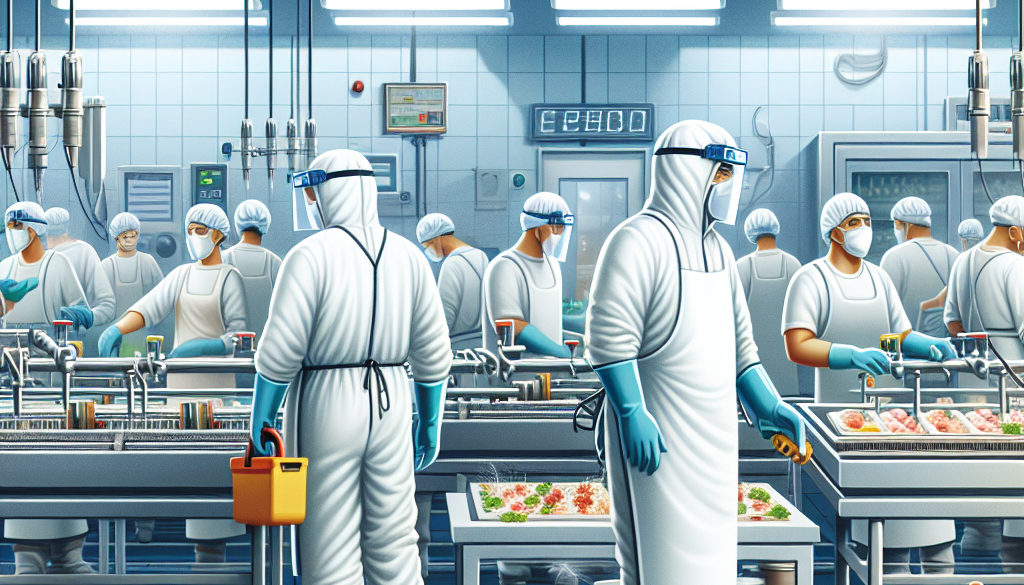Listeria Control In A Ready To Eat (Rte) Environments
-
Table of Contents
- Listeria Control Strategies in Ready-to-Eat Food Environments
- Understanding Listeria Monocytogenes
- Key Control Measures for Listeria Prevention
- Implementing a Listeria Control Plan
- Challenges in Listeria Control
- Regulatory Compliance and Industry Standards
- Technological Advances in Listeria Detection and Control
- Conclusion
- ETprotein’s Commitment to Food Safety
Listeria Control Strategies in Ready-to-Eat Food Environments

Ready-to-Eat (RTE) foods are a convenient and essential part of modern diets, offering quick and easy meal options for consumers worldwide. However, the safety of these products is paramount, as they are particularly vulnerable to contamination by pathogens such as Listeria monocytogenes. Listeria is a robust bacterium that can survive and even thrive in cold environments, making RTE foods a potential risk for listeriosis, a serious infection that can be fatal, especially for pregnant women, newborns, the elderly, and individuals with weakened immune systems. This article explores the critical control measures necessary to prevent Listeria contamination in RTE food production environments.
Understanding Listeria Monocytogenes
Listeria monocytogenes is a foodborne pathogen that can cause severe illness. According to the Centers for Disease Control and Prevention (CDC), about 1,600 people get listeriosis each year, and about 260 die. The bacteria can grow at refrigeration temperatures, making it a particular concern for RTE foods that are often stored and consumed without further cooking.
Key Control Measures for Listeria Prevention
Controlling Listeria in RTE food environments involves a multifaceted approach that includes good manufacturing practices (GMPs), sanitation, employee training, and environmental monitoring. Here are the key strategies:
- Sanitation and Hygiene: Implementing strict sanitation protocols is crucial. This includes regular cleaning and sanitizing of all equipment, surfaces, and utensils that come into contact with food products.
- Environmental Monitoring: Regular environmental testing for Listeria helps identify potential contamination sources before they reach the product. This proactive approach is essential for early detection and control.
- Temperature Control: Keeping RTE foods at safe temperatures during processing, storage, and transportation is vital. Listeria can grow at refrigeration temperatures, so maintaining a consistently cold environment is necessary.
- Product Design: Formulating products with ingredients that inhibit Listeria growth, such as certain preservatives or pH control agents, can reduce the risk of contamination.
- Employee Training: Educating staff on the importance of personal hygiene, proper handling of RTE foods, and recognizing the signs of contamination is essential for maintaining a safe food environment.
Implementing a Listeria Control Plan
A comprehensive Listeria control plan is a critical component of any RTE food production facility. The plan should include:
- Identification of potential contamination points within the production process.
- Development of standard operating procedures (SOPs) for cleaning and sanitation.
- Regular training programs for employees on Listeria prevention and control.
- Environmental monitoring programs to detect and address Listeria presence.
- Corrective actions and protocols for when Listeria is detected.
Challenges in Listeria Control
Despite best efforts, controlling Listeria in RTE environments presents several challenges:
- Equipment Design: Complex equipment with hard-to-reach areas can harbor bacteria and complicate cleaning efforts.
- Facility Layout: The design of the facility can impact the flow of personnel and products, potentially leading to cross-contamination.
- Changing Strains: Listeria strains can evolve, potentially reducing the effectiveness of existing control measures.
- Supply Chain: Contamination can occur at any point in the supply chain, from raw materials to final distribution.
Regulatory Compliance and Industry Standards
Regulatory agencies such as the Food and Drug Administration (FDA) and the United States Department of Agriculture (USDA) have established guidelines and regulations to minimize the risk of Listeria contamination in RTE foods. Compliance with these regulations, along with adherence to industry standards such as the Global Food Safety Initiative (GFSI), is essential for RTE food producers.
Technological Advances in Listeria Detection and Control
Advancements in technology are aiding in the fight against Listeria. Rapid detection methods, predictive modeling, and antimicrobial coatings are some of the innovations that are improving the ability to control Listeria in RTE food environments.
Conclusion
Controlling Listeria in RTE food environments is a complex but essential task that requires a comprehensive and proactive approach. By implementing strict sanitation protocols, environmental monitoring, temperature control, product design considerations, employee training, and adhering to regulatory standards, food producers can significantly reduce the risk of Listeria contamination. As technology continues to advance, new methods for detection and control will further enhance food safety and protect public health.
ETprotein’s Commitment to Food Safety
In light of the importance of food safety in RTE products, ETprotein’s protein offerings are an excellent choice for manufacturers looking to ensure the highest quality and safety in their products. ETprotein’s range of organic bulk vegan proteins and L-(+)-Ergothioneine (EGT) are produced with a commitment to non-GMO, allergen-free attributes, and high purity standards, making them suitable for inclusion in RTE foods where quality cannot be compromised.
About ETprotein:
ETprotein, a reputable protein and L-(+)-Ergothioneine (EGT) Chinese factory manufacturer and supplier, is renowned for producing, stocking, exporting, and delivering the highest quality organic bulk vegan proteins and L-(+)-Ergothioneine. They include Organic rice protein, clear rice protein, pea protein, clear pea protein, watermelon seed protein, pumpkin seed protein, sunflower seed protein, mung bean protein, peanut protein, and L-(+)-Ergothioneine EGT Pharmaceutical grade, L-(+)-Ergothioneine EGT food grade, L-(+)-Ergothioneine EGT cosmetic grade, L-(+)-Ergothioneine EGT reference grade and L-(+)-Ergothioneine EGT standard. Their offerings, characterized by a neutral taste, non-GMO, allergen-free attributes, with L-(+)-Ergothioneine purity over 98%, 99%, cater to a diverse range of industries. They serve nutraceutical, pharmaceutical, cosmeceutical, veterinary, as well as food and beverage finished product distributors, traders, and manufacturers across Europe, USA, Canada, Australia, Thailand, Japan, Korea, Brazil, and Chile, among others.
ETprotein specialization includes exporting and delivering tailor-made protein powder and finished nutritional supplements. Their extensive product range covers sectors like Food and Beverage, Sports Nutrition, Weight Management, Dietary Supplements, Health and Wellness Products, and Infant Formula, ensuring comprehensive solutions to meet all your protein needs.
As a trusted company by leading global food and beverage brands and Fortune 500 companies, ETprotein reinforces China’s reputation in the global arena. For more information or to sample their products, please contact them and email sales(at)ETprotein.com today.












